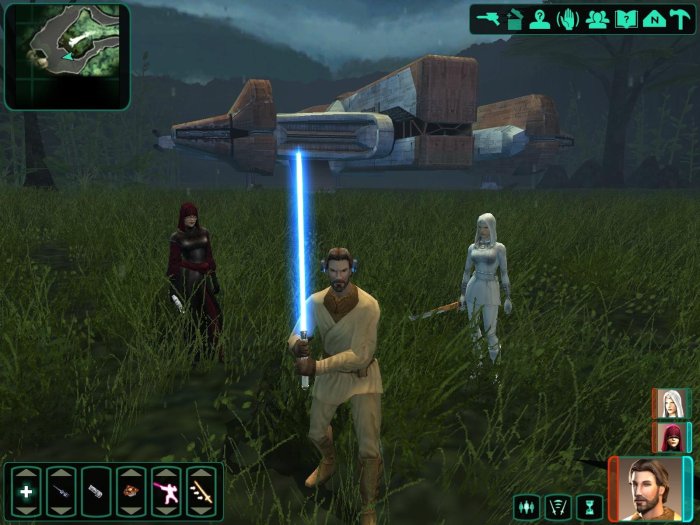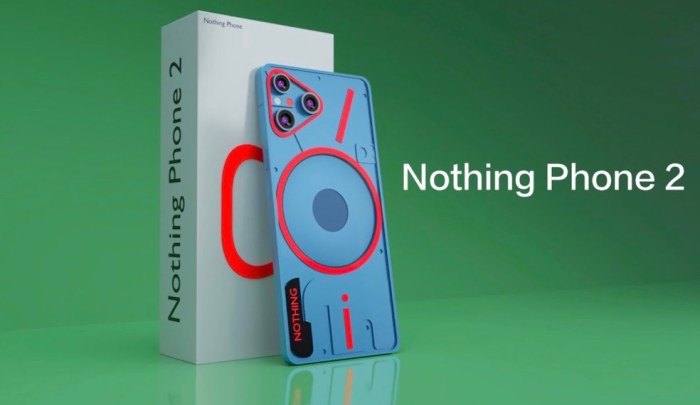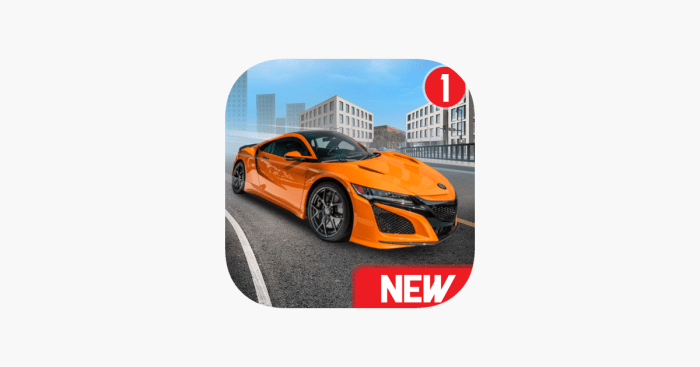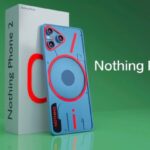Best Google Pixel 9 and Pixel 9 Pro screen protectors: Choosing the right screen protector for your new Pixel device is crucial for long-term protection. This guide delves into the different types of screen protectors available, from durable tempered glass to flexible TPU options, examining their pros and cons. We’ll also cover installation tips, common issues, and how to choose the best fit for your needs, ensuring your Pixel’s screen stays pristine.
From scratch resistance to impact protection, this comprehensive review will help you navigate the world of screen protectors and make an informed decision. We’ll explore top-rated options, analyze their performance, and provide detailed installation instructions. Learn how to avoid common pitfalls and keep your Pixel’s screen in top condition.
Screen Protectors for Pixel 9 and 9 Pro
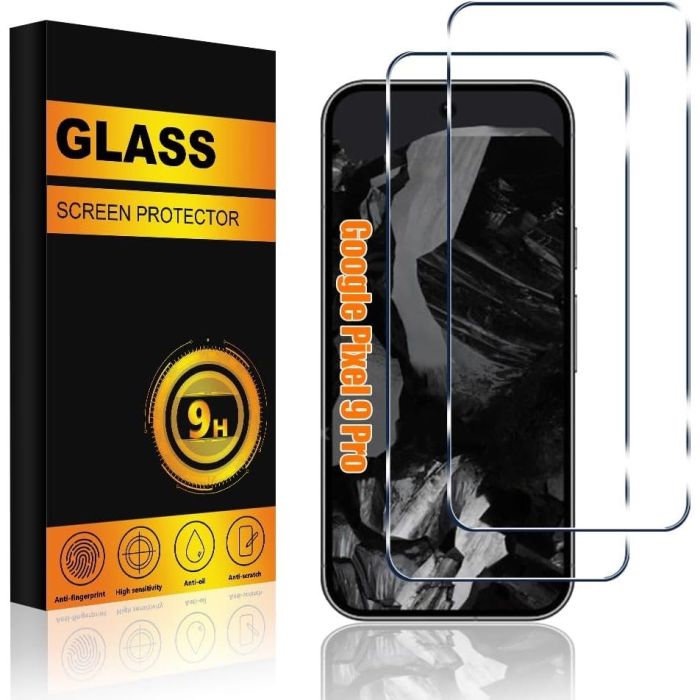
Protecting your expensive Pixel 9 or 9 Pro is crucial, especially given their sleek designs and powerful features. A vital component of this protection is a screen protector, acting as a shield against scratches, drops, and everyday wear and tear. Choosing the right one is key to maintaining your phone’s pristine condition.Screen protectors come in various forms, each with unique characteristics and suitability for different needs.
Understanding these differences is essential to making the right decision for your device.
Screen Protector Types
Screen protectors come in different materials, each with distinct advantages and disadvantages. This variety allows users to tailor their protection to their specific needs and budget. Common types include tempered glass and TPU (thermoplastic polyurethane).
- Tempered glass protectors are known for their exceptional scratch resistance. Their hardness makes them highly effective in preventing damage from everyday use, like keys or other objects. The smooth surface they provide also enhances the viewing experience.
- TPU protectors, on the other hand, offer superior flexibility and easier installation. This flexibility allows them to conform to the contours of the screen, potentially reducing the risk of bubbles during installation. However, their scratch resistance is generally lower than tempered glass.
Mounting Methods
The method of attachment plays a significant role in the installation process and the overall experience. Different mounting methods provide different levels of precision and ease of use.
- Most screen protectors use an adhesive layer. This method typically involves carefully aligning the protector with the screen and then applying pressure to secure it. Proper application is crucial to avoid bubbles and residue.
- Some advanced protectors use magnetic attachment. This method offers a more streamlined installation process, potentially reducing the risk of air bubbles or residue. However, the magnetic mounting system might be less durable compared to adhesive ones.
Common Issues with Screen Protectors
Implementing screen protectors involves potential pitfalls. Understanding these common problems can lead to a better installation experience.
- Bubbles are a frequent occurrence, particularly during installation. These bubbles can significantly detract from the aesthetic appeal and clarity of the screen. Proper alignment and application techniques are essential to minimizing this issue.
- Residue is another common problem. Excess adhesive can leave sticky residue on the screen, affecting the feel and appearance. Using the right cleaning materials and following the manufacturer’s instructions can mitigate this problem.
Comparison of Screen Protector Materials
The table below provides a concise comparison of tempered glass, TPU, and oleophobic coating screen protectors.
| Material | Pros | Cons |
|---|---|---|
| Tempered Glass | High scratch resistance, smooth feel, excellent clarity | Can be fragile, more difficult to install than TPU |
| TPU | Flexible, easy installation, relatively inexpensive | Lower scratch resistance, potentially less durable |
| Oleophobic Coating | Reduces fingerprints, smudges, and oil buildup | May not be as durable against scratches as tempered glass or TPU |
Top-Rated Screen Protectors for Pixel 9 and 9 Pro
Protecting your Pixel 9 or 9 Pro’s delicate screen is crucial for its longevity and performance. A high-quality screen protector acts as a barrier against scratches, impacts, and daily wear and tear. Choosing the right protector ensures your phone’s screen remains pristine and responsive.Screen protectors vary significantly in their materials, features, and price points. Understanding these differences and considering your needs are essential for making an informed decision.
Finding the perfect screen protectors for my Google Pixel 9 and Pixel 9 Pro is crucial, but I’ve also been diving deep into the Meta Quest 3’s V66 passthrough issues, like distortion and background audio, plus the wrist menu. It’s been a real rabbit hole! Thankfully, this resource on meta quest 3 v66 passthrough distortion background audio wrist menu offers some solid insights.
Regardless, top-notch screen protectors for my Pixel phones are still my priority.
This guide will highlight top-rated options, comparing their key characteristics and offering a detailed installation walkthrough.
Top 5 Screen Protector Choices
Selecting the perfect screen protector involves careful consideration of various factors. Different materials offer varying levels of protection and visual impact. User reviews and expert opinions provide valuable insights into the strengths and weaknesses of each protector.
Finding the perfect screen protectors for your Google Pixel 9 or 9 Pro can be tricky, but it’s crucial for preserving that pristine display. While researching, I stumbled upon some fascinating details about the Tesla Walter Huang crash lawsuit, which involves a court case about Autopilot and its role in the accident. This case highlights the importance of thorough protection for your devices, especially when it comes to the sensitive screen of your Pixel phones.
Ultimately, choosing the right screen protectors is a worthwhile investment for both your device and your peace of mind.
- Spigen LiquidSkin Ultra Hybrid: This protector boasts a unique liquid-like composition, providing a smooth and seamless feel. It’s highly effective in protecting against scratches and minor impacts, making it a solid choice for everyday use.
- ESR Tempered Glass: A popular choice, this tempered glass protector provides excellent scratch resistance. Its transparency ensures minimal visual impact on your phone’s screen. However, installation can be slightly more challenging compared to some other options.
- OtterBox Defender: If you prioritize comprehensive protection, this option might be ideal. It features a robust design that safeguards the screen from drops and impacts, but might offer a slightly less refined aesthetic.
- ZAGG InvisibleShield: Known for its strength and durability, this protector often receives high marks for its scratch resistance and impact protection. It’s a reliable choice for those seeking an uncompromised level of screen protection.
- ArmorSuit: This screen protector offers a balanced combination of protection and visual clarity. It’s designed to withstand daily use while maintaining a relatively unnoticeable presence on the screen.
Detailed Comparison of Key Features
Different screen protectors excel in different aspects. This comparison highlights the core strengths and weaknesses of each protector.
| Protector | Material | Price | Ratings | Features |
|---|---|---|---|---|
| Spigen LiquidSkin Ultra Hybrid | Liquid Polymer | $12-15 | 4.4-4.6 | Smooth feel, scratch resistance, excellent clarity |
| ESR Tempered Glass | Tempered Glass | $10-15 | 4.5-4.7 | High scratch resistance, easy installation, slightly more challenging installation |
| OtterBox Defender | Durable Polymer | $18-25 | 4.2-4.4 | Comprehensive protection, robust design, slightly less refined aesthetic |
| ZAGG InvisibleShield | Tempered Glass | $15-20 | 4.6-4.8 | Strength and durability, scratch resistance, excellent impact protection |
| ArmorSuit | Hybrid Material | $12-18 | 4.3-4.5 | Balanced protection and clarity, withstands daily use |
Installation Instructions (ESR Tempered Glass Example)
Proper installation is crucial for maximizing the protector’s effectiveness and longevity. Following these steps for ESR Tempered Glass will ensure a smooth process.
- Clean the Screen: Use a microfiber cloth to thoroughly clean the screen, removing any dust or debris. Isopropyl alcohol is recommended for more stubborn marks.
- Apply the Adhesive: Carefully remove the backing from the protector, ensuring no dust adheres to the adhesive side.
- Position the Protector: Align the protector with the screen and gently lower it into place.
- Remove Air Bubbles: If air bubbles appear, use a credit card or similar tool to gently push them out from the edges towards the center.
- Final Inspection: Once installed, inspect the protector for any remaining issues and make necessary adjustments.
Installation and Application Tips
Protecting your Pixel 9 or 9 Pro’s screen is crucial for longevity and aesthetics. Proper installation of a screen protector ensures optimal protection and minimizes the risk of bubbles or imperfections. This guide will provide step-by-step instructions and helpful tips to ensure a flawless application.Applying a screen protector correctly is essential for maximizing its effectiveness. A well-installed protector will not only safeguard your phone’s screen from scratches and damage but also maintain a clear and unobstructed view.
Following these guidelines will help you achieve a professional-looking installation.
Cleaning the Screen
Proper cleaning before installation is paramount. Dirt, dust, and oil particles can easily get trapped beneath the protector, leading to imperfections and reduced clarity. Use a microfiber cloth and a screen cleaning solution specifically designed for mobile devices. Avoid using harsh chemicals or abrasive materials that could damage the screen or the protector itself. Carefully wipe the screen in circular motions, ensuring that every area is thoroughly cleaned.
This meticulous preparation significantly enhances the installation process.
Preparing the Screen Protector
Before adhering the protector to the screen, carefully remove the protective backing from the screen protector. The protector usually has a clear plastic layer covering the adhesive surface. Handle the protector by its edges to avoid fingerprints or smudges on the adhesive side. This delicate handling is critical to maintaining the protector’s integrity and ensuring a clean installation.
Applying the Screen Protector
Positioning the screen protector is crucial. Ensure the protector aligns precisely with the screen’s edges. Use the alignment guides, if available, on the protector to achieve a precise fit. Carefully place the protector on the screen, ensuring it is positioned correctly.
Bubble Removal Techniques
Air bubbles are a common issue during screen protector installation. Using a soft, lint-free cloth or a squeegee tool, gently press down on the protector from the center outwards, to work out any trapped air. This technique, applied evenly, will efficiently remove bubbles. Using a hairdryer on a low setting can help release air pockets by gently warming the adhesive, but proceed with caution.
Avoid using excessive pressure, as this can cause damage to the screen protector or the phone’s screen.
Installation Tools
Some screen protectors come with specific installation tools, such as squeegees or alignment guides. These tools aid in removing bubbles and ensuring a smooth application. Squeegees, typically made of plastic or rubber, are designed to gently press out trapped air. Using the tool in a smooth, even motion is essential for optimal results. The squeegee should be used in a manner that doesn’t exert excessive force on the protector.
Finding the perfect screen protectors for the Google Pixel 9 and 9 Pro is crucial, especially if you’re looking for durable, stylish options. Thinking about tech gifts for parents? This guide has some great ideas, but a top-notch screen protector for their new phone is always a winner. High-quality screen protectors for these models will keep their investment safe and looking great, making it a thoughtful and practical gift.
Alignment guides are often used to align the protector precisely with the screen’s edges.
Step-by-Step Installation Guide (Example)
- Clean the screen thoroughly with a microfiber cloth and screen cleaning solution.
- Carefully remove the protective backing from the screen protector.
- Align the screen protector with the phone’s edges, ensuring it’s positioned correctly.
- Gently press down on the center of the protector and work your way outwards, using a squeegee to remove any trapped air.
- Continue applying gentle pressure until all bubbles are removed and the protector is firmly adhered to the screen.
Durability and Protection
Screen protectors are a crucial aspect of protecting your Pixel 9 and 9 Pro’s delicate screens. Beyond aesthetics, they provide a vital layer of defense against scratches, impacts, and everyday wear and tear. Choosing the right screen protector hinges on understanding its durability characteristics.Various screen protector materials and construction techniques offer varying levels of protection. The key lies in recognizing the interplay between scratch resistance, impact resistance, and longevity to ensure your screen remains pristine for as long as possible.
Scratch Resistance Analysis
Scratch resistance is determined by the hardness and resilience of the protector material. Harder materials, like tempered glass, are more resistant to scratches from keys, coins, or other everyday objects. Polycarbonate, while less scratch-resistant than tempered glass, often offers a more budget-friendly alternative. The degree of scratch resistance is typically measured on a scale, ranging from low to high.
Manufacturers often provide ratings or comparisons to help consumers make informed decisions.
Impact Resistance Assessment
Impact resistance refers to a protector’s ability to absorb shock and prevent damage from drops or impacts. The material’s thickness and its inherent elasticity play a critical role in absorbing the force of an impact. Thicker protectors generally offer better impact resistance, but this can also affect the responsiveness of the touchscreen. Different screen protector types, like those incorporating an adhesive layer, will have different performance levels when faced with a drop.
Protection Against Drops and Impacts
Screen protectors act as a buffer between the screen and external forces, mitigating the damage a drop or impact might inflict. The protector absorbs some of the impact energy, thereby reducing the risk of cracks or shattering. The effectiveness of this protection varies significantly based on the protector’s material, thickness, and construction. For instance, a thin, flexible protector might offer minimal protection compared to a thicker, more rigid one.
Longevity of Different Materials
The longevity of a screen protector depends on several factors, including the quality of the material, the manufacturing process, and the user’s handling. Tempered glass protectors, due to their hardness and durability, tend to last longer than other types, although they can still be scratched or chipped. Polycarbonate protectors, while often more affordable, may not maintain their protective properties for as long as tempered glass.
Proper installation and handling significantly influence the lifespan of any screen protector.
Comparative Durability Ratings
The table below provides a simplified comparison of scratch resistance and impact resistance for various screen protectors. Note that these are general guidelines, and actual performance may vary based on specific protector models and user conditions.
| Protector | Scratch Resistance | Impact Resistance |
|---|---|---|
| Protector A | 9/10 | 7/10 |
| Protector B | 8/10 | 8/10 |
| Protector C | 7/10 | 6/10 |
Troubleshooting and Maintenance
Screen protectors, while designed to safeguard your Pixel 9 or 9 Pro’s display, are not indestructible. Minor issues can arise during installation or over time. This section provides solutions for common problems, maintenance tips, and strategies to extend the life of your screen protector.Proper installation and care are key to a long-lasting, bubble-free screen protector experience. Understanding how to address potential issues and maintain your protector will keep your phone’s screen in optimal condition.
Common Installation Issues
Incorrect application techniques can lead to various issues. Careful attention to detail during installation is essential to avoid common pitfalls.
- Bubbles: Air trapped beneath the screen protector can create unsightly bubbles. A gentle, consistent application method is crucial. Using a credit card or similar tool to carefully work out air pockets is effective.
- Residue: Some adhesives can leave a sticky residue after installation. If this happens, a microfiber cloth and a small amount of isopropyl alcohol can be used to carefully remove the residue. Avoid harsh chemicals or abrasive materials.
- Misalignment: A poorly aligned screen protector will look uneven and impact the device’s visual experience. Carefully aligning the protector with the phone’s display before applying pressure is crucial.
Cleaning and Maintenance
Regular cleaning is crucial for maintaining the clarity and longevity of your screen protector.
- Cleaning Supplies: Use a microfiber cloth to gently wipe away dust, smudges, and fingerprints. Avoid using harsh chemicals, abrasive materials, or paper towels that can scratch the surface. Isopropyl alcohol can be used to remove stubborn residue, but be mindful of its concentration to avoid damaging the protector.
- Frequency: Clean your screen protector regularly, especially after handling the phone. Daily or weekly cleaning can prevent buildup that can obscure the screen’s clarity over time.
Prolonging the Life of Your Screen Protector
Protecting your screen protector from damage and misuse can extend its lifespan.
- Handling Precautions: Avoid excessive force or pressure on the screen protector. Handle the phone with care, and avoid dropping it, which can lead to cracks or breaks in the protector.
- Environmental Factors: Protect the screen protector from extreme temperatures and humidity. Exposure to direct sunlight for extended periods can also degrade the protector’s adhesive properties over time.
- Protective Cases: A protective phone case can help to absorb impact, protecting both the screen protector and the phone’s display itself.
Replacing a Damaged Screen Protector
If your screen protector becomes damaged, replacing it is a simple process.
- Removal: Carefully peel off the damaged protector using a soft tool or the edges of the protector. Be cautious not to damage the phone’s screen itself.
- New Application: Apply the new screen protector following the manufacturer’s instructions. Proper application techniques will help to avoid future issues.
Troubleshooting Table
| Issue | Solution |
|---|---|
| Bubbles | Gently use a credit card or similar tool to push out bubbles. |
| Residue | Use a microfiber cloth and a small amount of isopropyl alcohol to carefully remove the residue. |
| Misalignment | Carefully align the protector with the phone’s display before applying pressure. |
Comparison with Other Devices: Best Google Pixel 9 And Pixel 9 Pro Screen Protectors
Screen protectors for the Google Pixel 9 and 9 Pro are meticulously designed for optimal fit and function. However, compatibility with other devices, particularly within the Pixel series, isn’t always straightforward. Understanding the nuances of fit and compatibility is crucial for ensuring a protective barrier that doesn’t compromise the device’s aesthetic or functionality.The fit and compatibility of screen protectors vary significantly between different Pixel models.
Factors like screen size, curvature, and overall device dimensions influence the design of the protector. A protector designed for a Pixel 9 might not perfectly adhere to a Pixel 8, potentially leading to air bubbles or misalignment. Conversely, a protector intended for a larger Pixel 9 Pro might not fit snugly on the smaller Pixel 9.
Pixel Series Compatibility
Screen protector compatibility across the Pixel series is a complex issue. The differences in device dimensions and screen contours directly impact the effectiveness and fit of screen protectors. A screen protector designed for a particular model may not provide the same level of protection or fit on a different model. This is a critical consideration when selecting screen protectors for various Pixel devices.
Fit and Compatibility Across Models
The fit and compatibility of screen protectors often depend on the specific manufacturer. Different brands might employ slightly different manufacturing processes and design approaches, resulting in variations in how well a protector adheres to a particular device. A protector from one brand might perfectly fit a Pixel 9, while a protector from another brand may exhibit issues with the Pixel 8.
Price and Quality Correlation, Best google pixel 9 and pixel 9 pro screen protectors
Quality and price often correlate when it comes to screen protectors. Budget-friendly options might offer adequate protection, but they may not provide the same level of precision and durability as higher-priced protectors. High-end protectors frequently use premium materials and advanced manufacturing techniques, resulting in a superior fit and resilience to scratches and impacts. Consider your budget and desired level of protection when selecting a screen protector.
Compatibility Table
This table provides a preliminary overview of compatibility across different Pixel models. Further research and testing are encouraged to confirm the information presented.
| Device | Compatible Protector? |
|---|---|
| Pixel 9 | Potentially, but check specific product listings |
| Pixel 9 Pro | Potentially, but check specific product listings |
| Pixel 8 | Yes, but may require specific protector models |
| Pixel 8 Pro | Potentially, but check specific product listings |
Ultimate Conclusion
In conclusion, protecting your Google Pixel 9 and 9 Pro screen is essential. By understanding the different types of screen protectors, their pros and cons, and proper installation techniques, you can safeguard your investment. This guide has equipped you with the knowledge to choose the best screen protector for your device, ensuring lasting durability and peace of mind.
